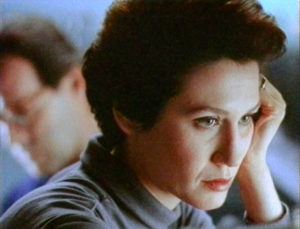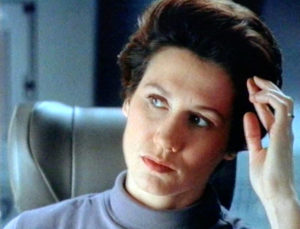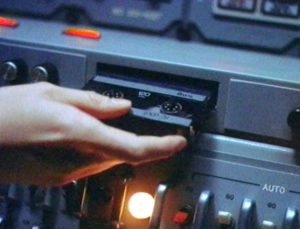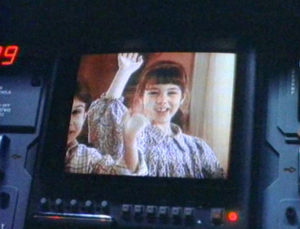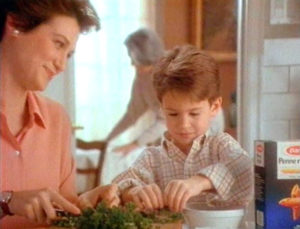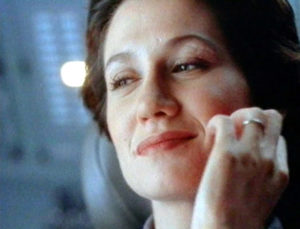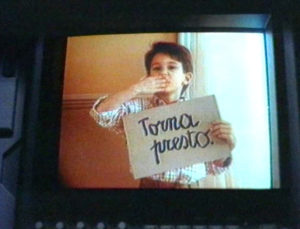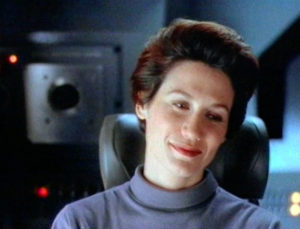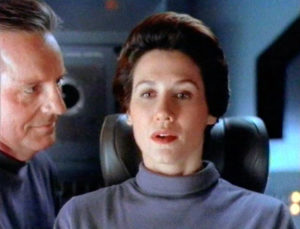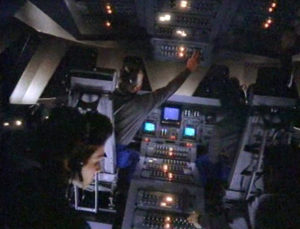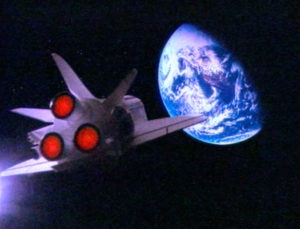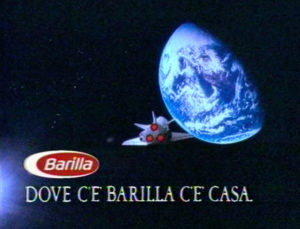At the Boundaries of the Universe
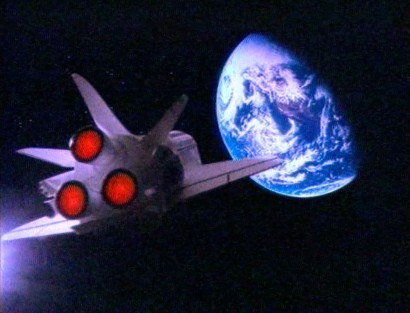
by Emmanuel Grossi
After seven years densely filled with success that had introduced Barilla into the collective imaginary world as the emblem of family, the “Where there’s Barilla, there’s home” campaign ended triumphantly with the special appearance of Paul Newman as Santa Claus. The agency was already working on new narrative solutions, in line with the new focus of communication, when all of a sudden the idea of a final comeback lit up. The now inseparable combination Barilla-domestic hearth, that crossed the national boundaries to reach the heart of Great Mother Russia, was to win the force of gravity and to propel itself into space.
Franco Bellino, who was at the time scriptwriter and head of the cinema office of Young & Rubicam, tells that working in synergy with creative director Gavino Sanna, the tutelary deity of the campaign, they thought of a long sequence plan. Starting from the face of a mother that was thinking with sweet nostalgia of a joyful dinner with her children, the camera would progressively widen to reveal that the woman was inside the cabin of a spaceship. While the interstellar journey followed its course, the memory of the family atmosphere crowned by a pasta meal turned even that small spot in the cosmos, getting smaller and more distant, into a “home”, making the weight of distance from loved ones lighter.
The short – as was the style of Barilla and of Young & Rubicam – was to be made with top standards. Franco still recalls his personal achievement in getting a positive answer from Mary Sean Young, the protagonist of Blade Runner, while the filming was to be entrusted to the German producer of The Adventures of Baron Munchausen by Terry Gilliam, and to movie director Renato Longi: he collaborated to the long feature film in the preliminary phases as a consultant for special effects and had in his portfolio of experience works of international interest (he was the assistant of important British and American directors), based most of all on special effects and experimental techniques.
While negotiation and preliminaries were fervently going on, a plot twist took place: Gavino and his trusted producer Alessandra Ferrari left for the United States to film the commercial with another production, another troupe and a slightly different script. The reasons for this sudden change are not known: perhaps the urgent need to present the short to the Company, or perhaps the necessity to contain costs, or other contingent matters.
The final sequence was different: the mother, after looking on a monitor at the video message from her children who ideally waited for her to have lunch, rather than proceeding towards the boundaries of the universe, turns the engines of the spaceship on and navigates towards the Earth. A new declination of the “going back home” theme, therefore, was the central idea in the more contained meaning of family reunification, as it was since the initial shorts Treno, Cadetti and Maternità. This theme will appear again in the Barilla communication campaign of 2000 with the commercial Reunion by Barry Myers.
However, the journey of the astronaut mother never landed on the national screens. As it was customary, the final movie was shown as a preview to a narrow sample of spectators (the so-called area test) to verify their immediate reactions. These were rather lukewarm: the public was not able to identify and to feel fully involved with a story that was so far from its daily life.
It is not the first case of a commercial that was designed, filmed and never aired, and that was made public only nowadays thanks to the work of conservation and divulgation of the Barilla Historical Archive. The same thing happened with two other subjects of the same campaign: Coppia separata of 1986 (that was entered in the Cannes Lions competition all the same), and Il Posto of 1989 (freely inspired to the movie by Ermanno Olmi by the same name).
This should not surprise us: in the 1980s the timeframe for the making of an “important” short was often very long and considering market analysis, ideation, development, preparation work, filming and editing, a year or more could go by. Meanwhile, all around the world spun at supersonic speed and a thousand other spots jumbled up over the screens. Rather than to come out with a campaign that was precociously aged or overcome by actuality, it was better to keep it in a drawer and to occupy television space that had already been bought with something simpler, even an easy made thing, but fully in target.
